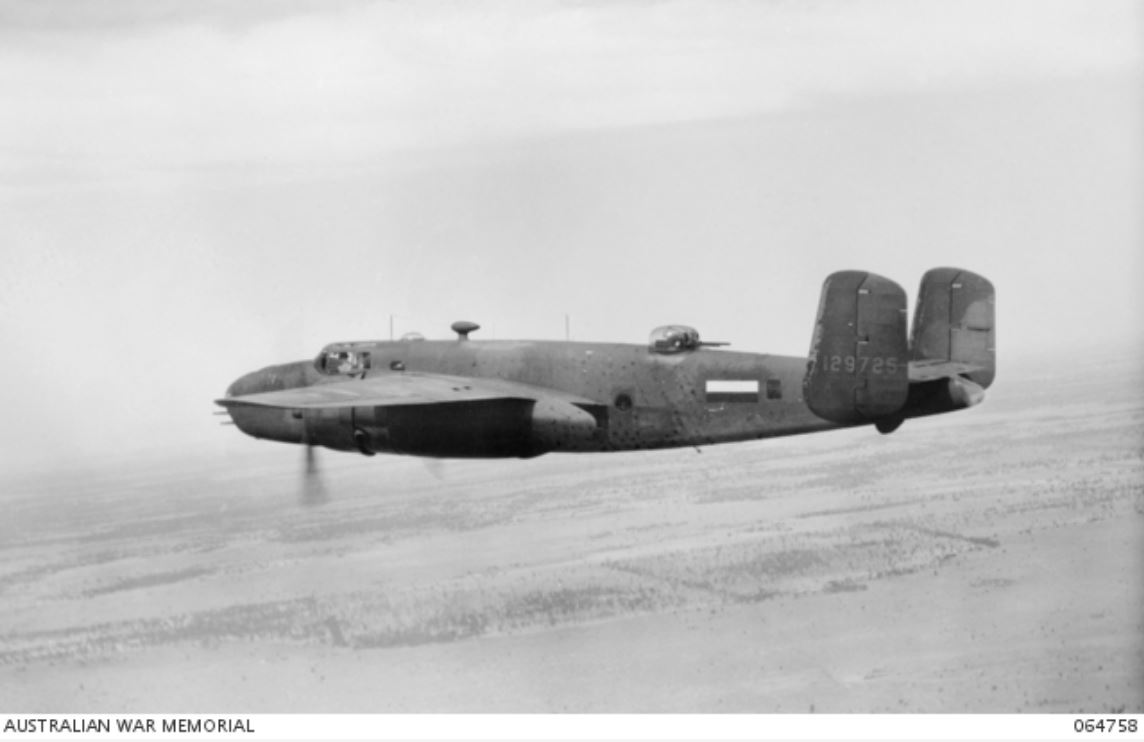No. 18 (Netherlands East Indies) Squadron RAAF
From Our Contribution
Contents
Brief History
Dutch airmen who escaped to Australia after the Japanese invasion of the Netherlands East Indies (NEI) were brought together to form Dutch squadrons under RAAF command. First among these special squadrons was No. 18 (Netherlands East Indies) Squadron RAAF, formed at Canberra on 4 Apr 1942. The squadron was staffed by a mixture of Dutch and Australian personnel. The RAAF supplied many co-pilots, air gunners, bombardiers, photographers, and ground staff. The squadron's aircraft were painted with Dutch flags, instead of RAAF markings. The US provided supplies and equipment.
An early success was had on 5 Jun 1942, B-25s from the Squadron sank a 300-ton Japanese submarine off Sydney. In December 1942 the unit moved to MacDonald airstrip in the Northern Territory and began transforming the undeveloped site into a workable airbase. From January 1943 the squadron commenced offensive operation missions over East Timor and the Tanimbar and Kai Islands. The squadron moved to Batchelor airfield in the Northern Territory between April and May 1943. It commenced reconnaissance over Somniloguy Island, Tanimbar Island, and Ambon, and offensive operations on Penfoei, Koepang Harbour, and Dili. Between November 1943 and March 1944 No. 18 Squadron was tasked with preventing Japanese reinforcements reaching the north-east part of Papua and New Guinea. Operations focused on attacking positions and seaborne traffic around Timor, Ambon, and the Kai and Aroe Islands. The sinking of over 25,000 tones of Japanese ships earned the unit the nickname "the Dutch cleanser".
On 10 Mar 1944 the unit was moved to an airbase on the Exmouth Gulf in Western Australia in anticipation of a Japanese attack on the Australian mainland. Two weeks later, when the threat proved empty, squadron aircraft returned to Batchelor and resumed operations over Dutch New Guinea. From mid-1944 the number of Japanese fighters decreased and No. 18 Squadron aircraft began searching for prisoner-of-war camps across Java and dropping leaflets. Anti-shipping patrols continued and on 6 Apr 1945, in combination with Liberator bombers from No. 21 Squadron, 11 B-25s from No. 18 Squadron bombed the Japanese light cruiser Isuzu, which was evacuating troops from Timor. The damaged cruiser was sunk the next day by Allied submarines. Shortly after this success the squadron moved to Balikpapan to continue to drop leaflets, food, and medical supplies to prisoners held in Java, Borneo, and the Celebes. On 25 Nov 1945 the RAAF component of the squadron was disbanded.
Twenty five Australian members of the Squadron died while serving in No. 18 Squadron RAAF, five accidental.
Squadron Personnel
- Edward Trayton Elvish 5 May - 21 Jul 1943
Cadets
- Edward John Williams 3 Jul - 22 Dec 1943
Individual Honours
- 1 x Distinguished Flying Medal
- 2 x Mentioned in Despatches
Notes
For more information on this unique Squadron, see pages 125 - 128 of Peter Helson's Doctoral Thesis "The Forgotten Air Force - The Establishment and Employment of Australian Air Power in the North West Area - 1941-1945"

